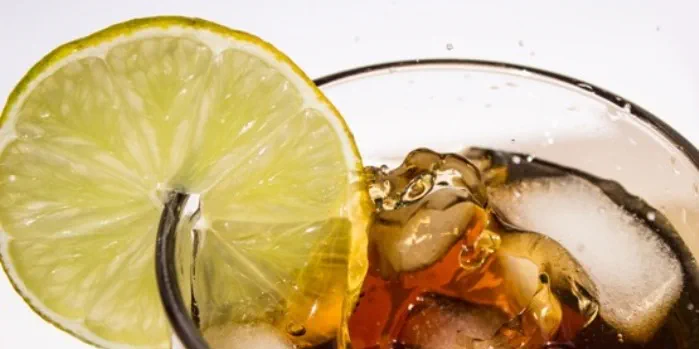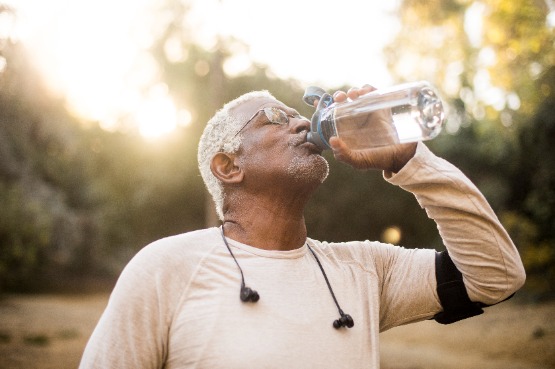Top 10 teeth-staining foods
If you’re partial to a cup of tea or coffee, you may be familiar with the effects they have on your teeth. Lots of different types of food and drink can cause tooth staining. Below we list some of the most common items that can lead to discoloration of your teeth. Limiting these, along with improving your oral hygiene, can help to reduce staining.

What causes tooth stains?
Chemical compounds called chromogens give certain foods and drinks their strong colour, and these compounds can stain our teeth. Foods and drinks containing a substance called tannin can also cause staining. Acids can wear down your teeth, increasing the chances of your teeth getting stained. In general, if something could stain your clothes or your tongue, the chances are it’s also going to stain your teeth.
Common teeth-staining foods
Here are some of the most common types of food and drink that can stain your teeth. Some of them contain vitamins and minerals which have lots of health benefits. You don’t need to cut them all out of your diet, especially if you don’t consume them regularly. But, if you’re worried about teeth staining and eat or drink some of the items below a lot, you might want to think about cutting down.

- Tea and coffee. Tea (including green tea) and coffee contain tannins, which cause staining.
- Red wine. Drinking red wine is one of the most common causes of tooth staining.
- Cola. The dark colouring of cola can cause staining. It also contains acids that can wear away your enamel, making cola a definite no for your teeth.
- Fruit juices. Dark-coloured fruit juices, such as cranberry, blueberry and grape juice are liable to leave stains on your teeth.
- Tomato-based sauces. Tomatoes are a great source of many important nutrients. But the pigment causing their deep red colour makes them a key offender for staining.
- Curry. Curries can have strong, deep colouring and often contain turmeric, which can cause staining. So it’s no wonder that eating lots of curries can leave behind tell-tale signs on your teeth.
- Balsamic vinegar. It may make a tasty salad dressing, but the deep pigmentation in balsamic vinegar means you need to watch out for its effects on your teeth.
- Soy sauce. It’s a classic addition to any good stir-fry, but the dark colouring of soy may linger on your teeth long after your meal’s finished.
- Berries. Eating fruit such as berries can be a great way to get your five-a-day. But as healthy as they may be, berries are another tooth-staining culprit.
- Beetroot. Beetroot contains lots of vitamins and minerals, and there have been claims about its health benefits. But if you’ve ever handled beetroot, you’ll know just how much it can stain.

How can you prevent food from staining your teeth?
Some people’s teeth stain more easily than others. This can be caused by levels of enamel (the coating that protects our teeth), genetics, and even how much saliva we have. But the biggest factor that increases your risk of tooth staining is poor oral hygiene. The good news is that this is something you can improve.
Here are seven simple oral hygiene steps you can take to help keep your teeth sparkling white.
- If you have staining because you consume a lot of a certain food or drink, try to limit it or look for alternatives. Could you substitute a normal cup of tea for a light herbal tea or flavoured hot water?
- Rinse your mouth with water after eating or drinking something that may stain your teeth.
- Use a straw when drinking cold drinks like cola or juice that may stain your teeth.
- Chewing gum that contains xylitol (a sugar substitute) can help to stimulate more saliva, which cleanses your mouth.
- Eat plenty of crunchy fruit and vegetables, like apples, carrots and celery. They boost saliva and scrub your teeth, acting as natural stain removers.
- Make sure you’re brushing your teeth twice a day, and as recommended by your dentist.
- See your dentist or hygienist as frequently as they advise. They may recommend some products you can try to reduce staining. They can also tell you more about any services they may offer, such as professional cleaning or tooth whitening.
Can tooth stains be removed?
There are lots of things that you can do to help remove or reduce tooth stains. For example, brushing your teeth twice a day can help to reduce staining. You can also visit your dentist for professional tooth cleaning, and to discuss options for whitening your teeth.
Are you interested in learning more about your health? Discover more about our range of health assessments.
-
Sources Sources
- Tooth discoloration. Medscape.emedicine.medscape.com, updated 7 December 2020
- Bleaching Techniques in Restorative Dentistry: An Illustrated Guide. Linda Greenwall (ed). Informa Healthcare. 2001
- Personal communication. Monica Herreras-Fortuny, Dental Hygienist, September 2022
- Oral and maxillofacial medicine. Crispian Sculley (ed). Elsevier Health Sciences. 2012
- Essentials of esthetic dentistry. Avijit Banerjee (ed). Elsevier Health Sciences. 2015
- Burkhart, NW. Reduction of Tooth Stains: Patient education is vital to preventing tooth stain. Registered Dental Hygienist. rdhmag.com, published 14 April 2015
- Antioxidants in Vegetables and Nuts - Properties and Health Benefits. Gulzar Ahmad Nayik, Amir Gull (eds). Springer Nature. 2020
- Dental Caries: The Disease and Its Clinical Management. Bente Nyvad, Edwina Kidd, Ole Fejerskov (eds). Wiley. 2015
About our health information
At Bupa we produce a wealth of free health information for you and your family. This is because we believe that trustworthy information is essential in helping you make better decisions about your health and wellbeing.
Our information has been awarded the PIF TICK for trustworthy health information. It also follows the principles of the The Information Standard.

More diet and nutrition articles
Did you find our advice helpful?
We’d love to hear what you think. Our short survey takes just a few minutes to complete and helps us to keep improving our healthy lifestyle articles.
Legal disclaimer
This information was published by Bupa's Health Content Team and is based on reputable sources of medical evidence. It has been reviewed by appropriate medical or clinical professionals and deemed accurate on the date of review. Photos are only for illustrative purposes and do not reflect every presentation of a condition.
Any information about a treatment or procedure is generic, and does not necessarily describe that treatment or procedure as delivered by Bupa or its associated providers.
The information contained on this page and in any third party websites referred to on this page is not intended nor implied to be a substitute for professional medical advice nor is it intended to be for medical diagnosis or treatment. Third party websites are not owned or controlled by Bupa and any individual may be able to access and post messages on them. Bupa is not responsible for the content or availability of these third party websites. We do not accept advertising on this page.







